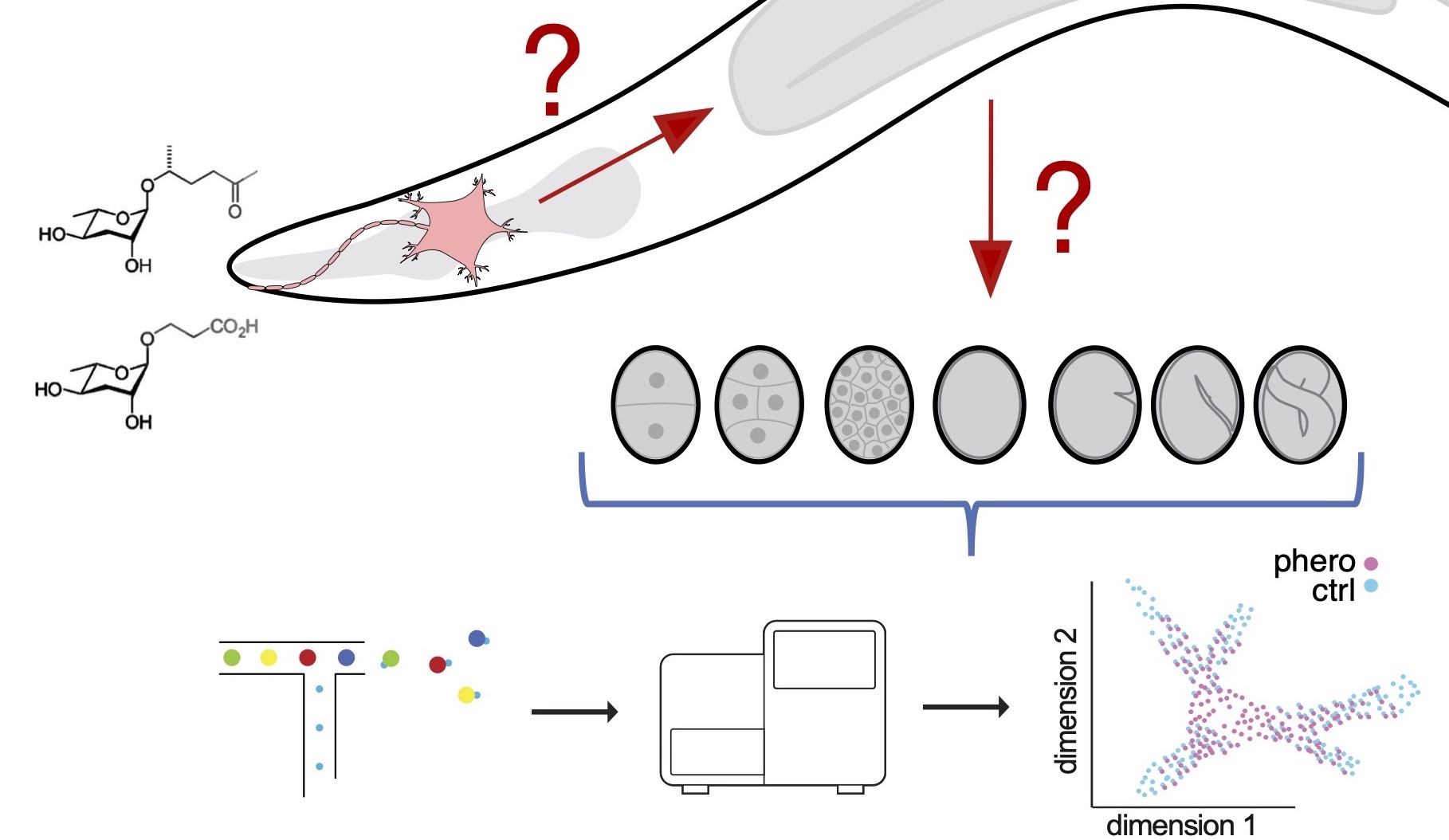Understanding the impact of neuronal intergenerational perception in C. elegans


In my team we explore both genetic and non-genetic sources of phenotypic variation and we are especially interested in understanding how perception of ancestral environment contribute to phenotypic variation using C. elegans as model system and a combination of transcriptomics, genetics and quantitative phenotyping.
Learn more on our team's website here.
Contact Mirko FRANCESCONI at mirko.francesconi@ens-lyon.fr
NERVSPAN project
We recently found that parental perception of pheromone impacts germline development and minimum generation time in the progeny. In contrast to other examples of inter-generational memory in C. elegans which involve very different mechanisms of sensing that do not rely on the parental nervous system or environmental stimuli such as temperature that likely act directly on all cells, including the germ cells, this represent a unique and well controlled system to explore how neuronal signals are intergenerationally transmitted through the germline and interpreted in the next generation to generate phenotypic variation.
Therefore, we now want to systematically characterize the molecular changes induced by parental perception of pheromone using transcriptomics. Our preliminary data show that parental exposure to pheromone impacts neuronal specific gene expression in the progeny during early embryo development. The objective is now to characterize cell- and time specific expression changes by collecting time resolved single-cell transcriptomic data during embryo development and analyse the data in combination with resources that are uniquely available in C. elegans such as complete single cell transcriptomic atlas of embryo development and the wiring of C. elegans nervous system.
Objectives
In this project you will :- Collect single cell transcriptomic data during embryo development in the progeny of pheromone exposed and control parents.
- Perform an integrative analysis of transcriptomic data in combination with existing data .
Ultimately this analysis will suggest further phenotypic differences induced by parental perception of pheromone as well as the molecular and cellular pathways of signal transmission, interpretation and generation of the phenotypic differences.